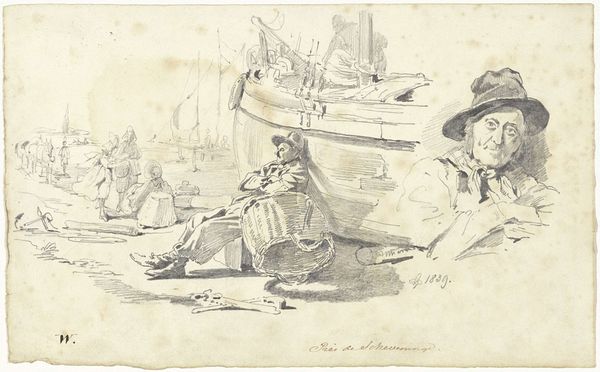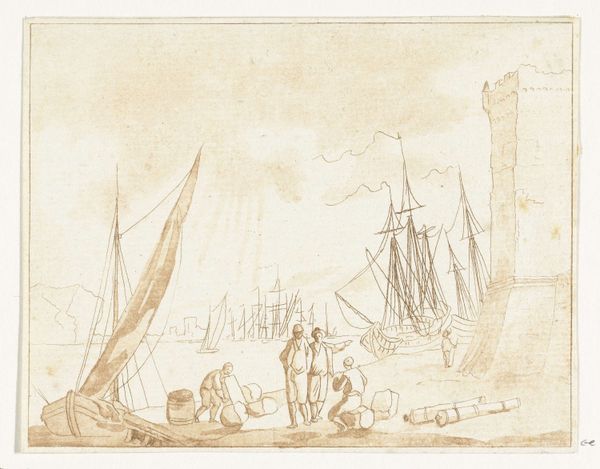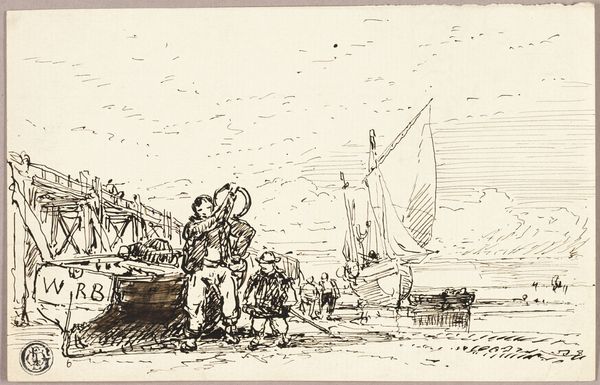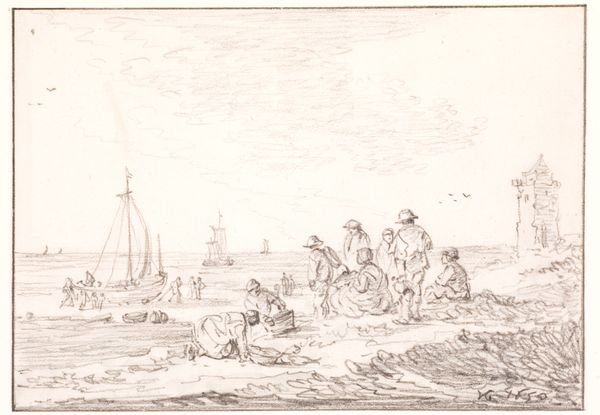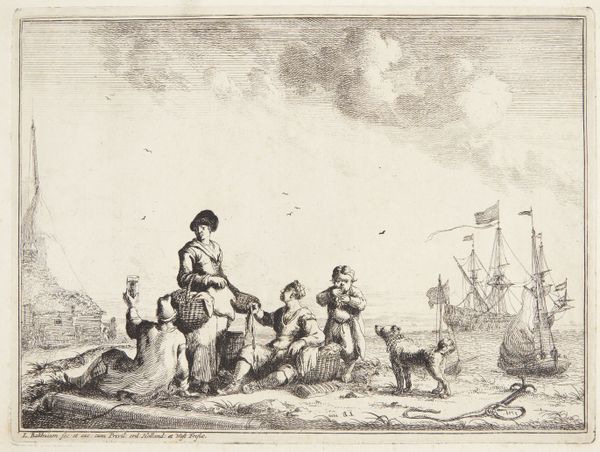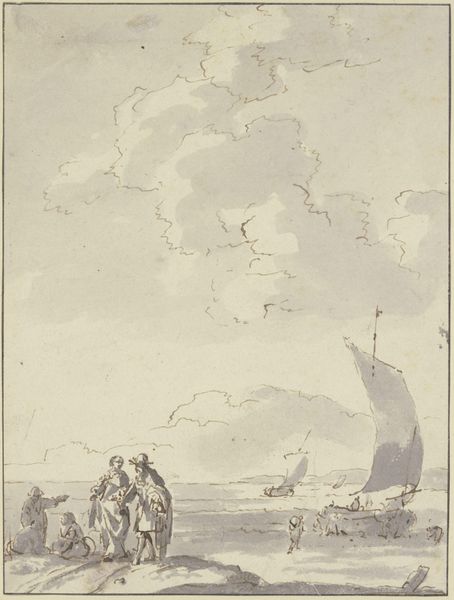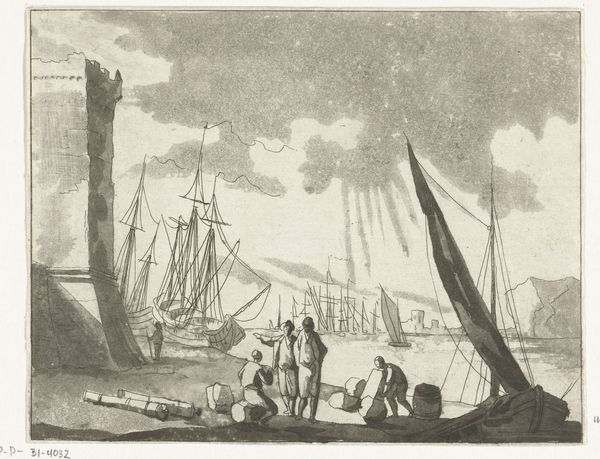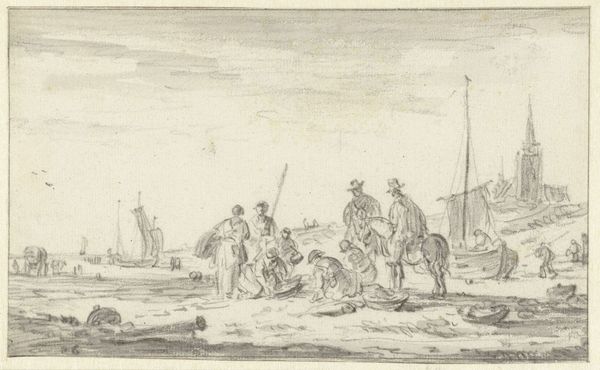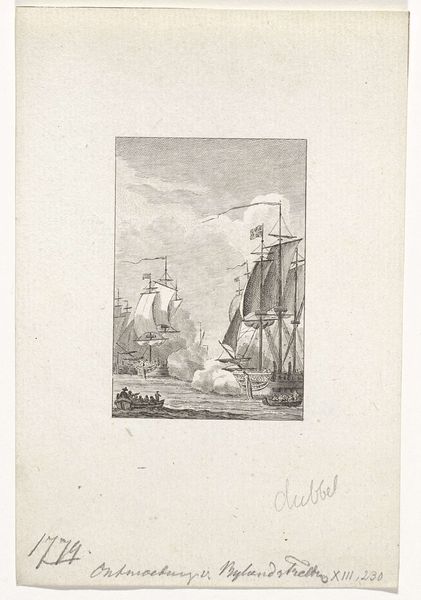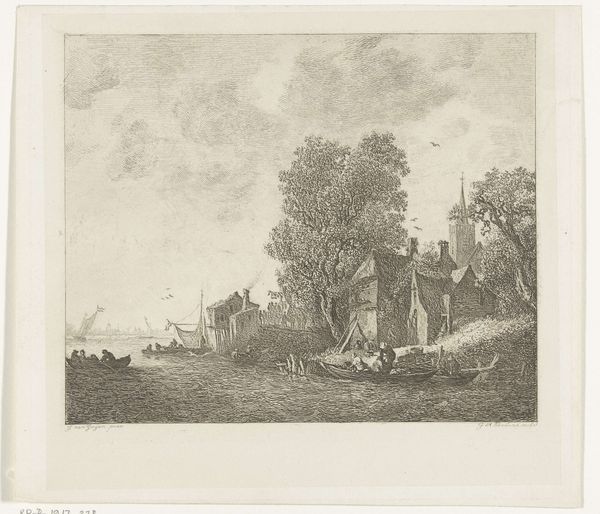
drawing, ink, pencil
#
drawing
#
comic strip sketch
#
neoclacissism
#
quirky sketch
#
landscape
#
personal sketchbook
#
ink
#
idea generation sketch
#
sketchwork
#
ink drawing experimentation
#
pen-ink sketch
#
pencil
#
sketchbook drawing
#
history-painting
#
storyboard and sketchbook work
#
initial sketch
Dimensions: height 320 mm, width 270 mm
Copyright: Rijks Museum: Open Domain
Curator: Before us is "Koophandel en Zeevaart, decoratie op de Nieuwmarkt, 1795," a drawing in ink and pencil by Johannes van Dregt, housed here at the Rijksmuseum. Editor: There's something almost ephemeral about it, isn't there? The lines are so delicate, the composition airy...it feels more like a fleeting thought than a concrete scene. Curator: Indeed. Van Dregt created this work amidst a backdrop of shifting political and economic powers. The decoration was intended for display in the Nieuwmarkt which, at that time, would have been an active space for market activity. Consider how representations of trade were mobilized to influence public opinion in the late 18th century. Editor: Speaking of "decorations," notice the mythological figures taking center stage. Their idealized forms recall a Neoclassical aesthetic—a clear sign of art historical movements in play—though, somehow, even they feel unfinished, suspended. Also observe the rays from above. It provides depth, volume, and visual impact through strategic tonal deployment. Curator: And yet these figures are inextricably linked to the labor and maritime traffic depicted on the right side of the composition. Consider how artistic rendering in this piece is mobilized to connect ideals of commerce and governance. The presence of labor is represented via more quotidian workers and their activities along the Nieuwmarkt harbor. Editor: Van Dregt really balances various weights and proportions nicely in relation to classical modes. Also observe the directionality of light and its effect. In relation, are those merchant ships on the right really to scale? I wonder... Curator: It’s a potent image, isn’t it? Think of the intended viewership on the Nieuwmarkt. Editor: Yes, quite. The sketch reveals to us how carefully crafted and intentionally placed artistic decisions were in constructing its ultimate intended reception. Curator: This gives a window into the networks of global capital that informed the local space and social identities. It also points to how even temporary displays can serve as stages for projecting power and ideology. Editor: By isolating and analyzing its visual characteristics, we see a work deeply invested in historical and cultural negotiations with Neoclassical forms, production strategies and their interrelations.
Comments
No comments
Be the first to comment and join the conversation on the ultimate creative platform.
